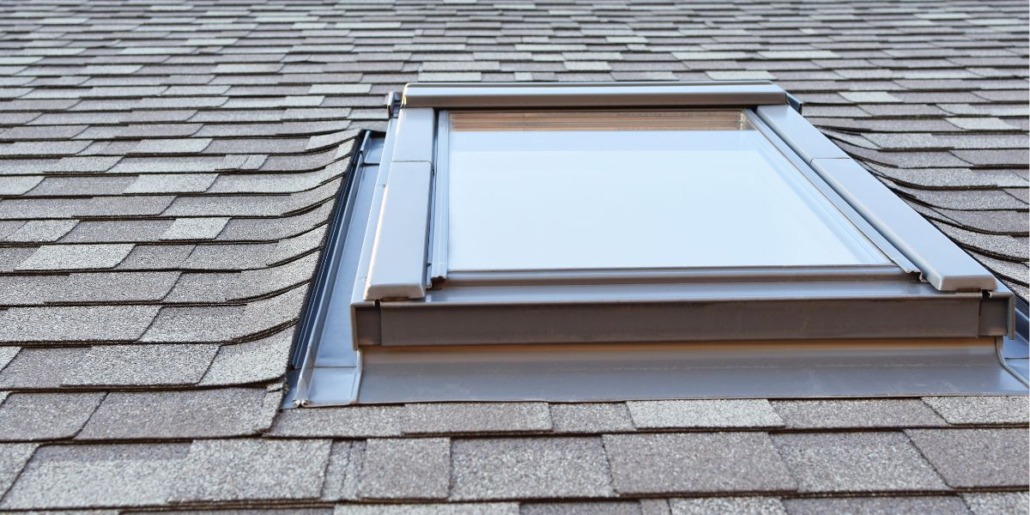Can You Replace Flashing Without Replacing the Roof?
Flashing is a critical component of your roofing system, designed to prevent water from penetrating the joints and seams of your roof. Over time, flashing can deteriorate, leading to leaks and water damage. Homeowners in New Castle County, DE, often wonder if they can replace flashing without the need for a full roof replacement. In this article, we will explore the feasibility of replacing flashing independently and provide insights from American Craftsmen, LLC, your local roofing experts.
Understanding Roof Flashing
Flashing is typically made from metal, such as aluminum or galvanized steel, and is installed around areas prone to leaks:
Common Locations
- Chimneys: Flashing is installed at the base to seal the gap between the chimney and roof.
- Valleys: Where two roof slopes meet, flashing directs water away from these vulnerable areas.
- Vents and Skylights: Flashing around roof penetrations prevents water from seeping into your home.
Purpose
- Waterproofing: Flashing acts as a barrier, directing water away from joints and seams.
- Protection: Prevents water damage to roof decking and interior structures.
Signs That Your Flashing Needs Replacement
Identifying the signs of damaged or failing flashing can help you take timely action:
Visible Damage
- Rust and Corrosion: Metal flashing can rust over time, compromising its effectiveness.
- Cracks and Holes: Physical damage can allow water to penetrate the roofing system.
Water Leaks
- Interior Water Stains: Water stains on ceilings and walls near chimneys or vents indicate potential flashing issues.
- Mold and Mildew: Persistent moisture problems can lead to mold growth in your attic or interior spaces.
Replacing Flashing Without Replacing the Roof
It is often possible to replace flashing without undertaking a full roof replacement:
Isolated Repairs
- Localized Damage: If the damage is confined to specific areas, such as around a chimney or vent, the flashing can be replaced independently.
- Professional Assessment: A thorough inspection by a roofing professional can determine if isolated flashing replacement is viable.
Cost-Effective Solution
- Lower Costs: Replacing only the flashing is generally less expensive than a full roof replacement.
- Minimal Disruption: Targeted repairs are quicker and less disruptive to your home and daily routine.
Steps to Replace Flashing
Replacing flashing involves several steps to ensure proper installation and effectiveness:
Inspection and Removal
- Assess Damage: A professional inspection identifies all areas where flashing needs replacement.
- Remove Old Flashing: Carefully remove the damaged flashing without disturbing the surrounding roofing materials.
Installation
- Custom Fit: New flashing is cut and shaped to fit precisely around roof features.
- Secure Installation: Flashing is secured in place with appropriate fasteners and sealants to prevent water infiltration.
Sealing and Finishing
- Seal Joints: Apply sealant to all joints and edges to ensure a watertight barrier.
- Check for Leaks: Perform a thorough check to confirm the effectiveness of the new flashing.
When a Full Roof Replacement May Be Necessary
In some cases, replacing flashing alone may not be sufficient:
Extensive Damage
- Widespread Issues: If the roof has widespread damage or is nearing the end of its lifespan, a full replacement may be more cost-effective in the long run.
- Underlying Problems: Severe water damage or rot to the roof decking and structural components may necessitate a comprehensive approach.
Aged Roof
- Material Lifespan: If your roof is old and showing signs of wear beyond just the flashing, it may be time for a complete roof replacement to ensure overall integrity and protection.
FAQs
Can I replace flashing myself?
- Answer: While it’s possible to replace flashing as a DIY project, it’s recommended to hire a professional to ensure proper installation and avoid potential issues.
How often should roof flashing be inspected?
- Answer: Roof flashing should be inspected at least once a year and after major storms to ensure it remains in good condition and performs effectively.
How much does it cost to replace roof flashing?
- Answer: The cost of replacing roof flashing varies depending on the size and complexity of the job. On average, it can range from $300 to $1,500. For an accurate estimate, contact a local roofing contractor like American Craftsmen, LLC.
What materials are best for roof flashing?
- Answer: Common materials include aluminum, galvanized steel, and copper. The choice depends on your roof type, aesthetic preferences, and budget.
Conclusion
Replacing flashing without a full roof replacement is often a viable and cost-effective solution to address specific issues and extend the life of your roof. For expert flashing replacement and roofing services in New Castle County, DE, trust American Craftsmen, LLC. Contact us today for a professional inspection and keep your home protected from water damage.





Trackbacks & Pingbacks
[…] carefully inspect your roof for any signs of damage. Look for missing or damaged shingles, dented metal flashing, cracked tiles, or any other visible signs of impact. If you’re not comfortable climbing onto […]
Leave a Reply
Want to join the discussion?Feel free to contribute!